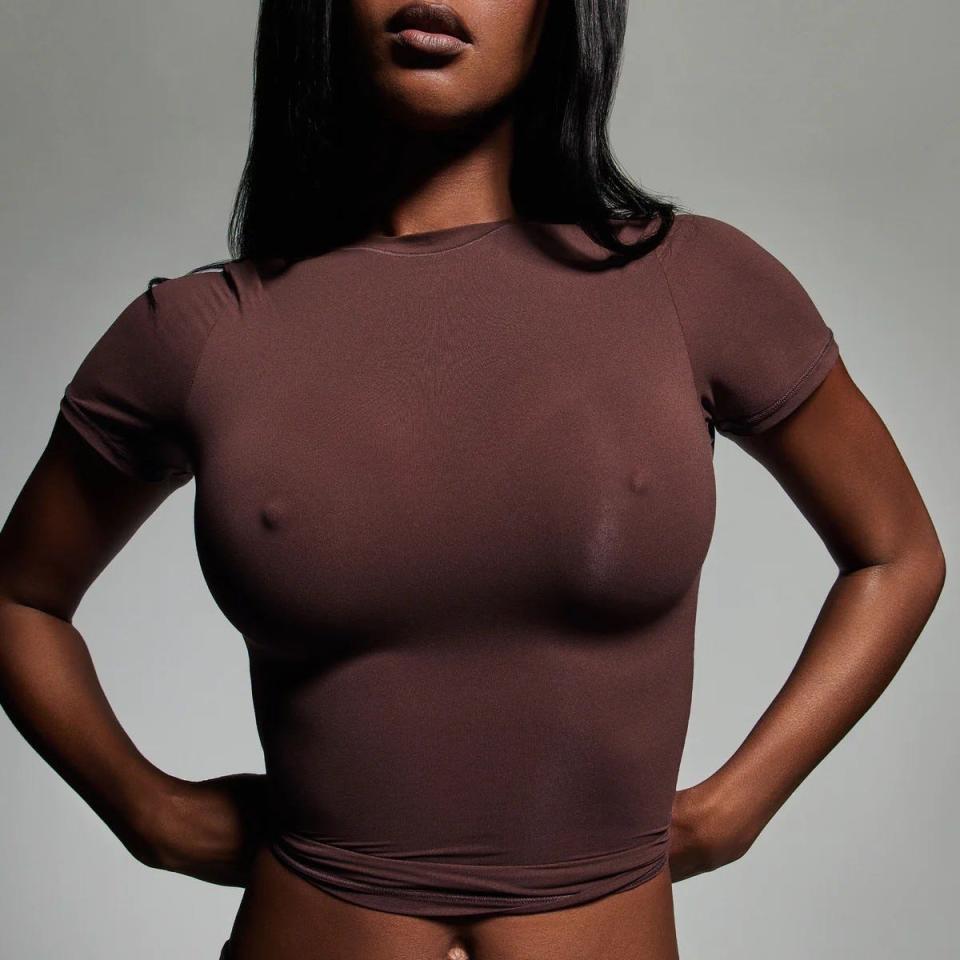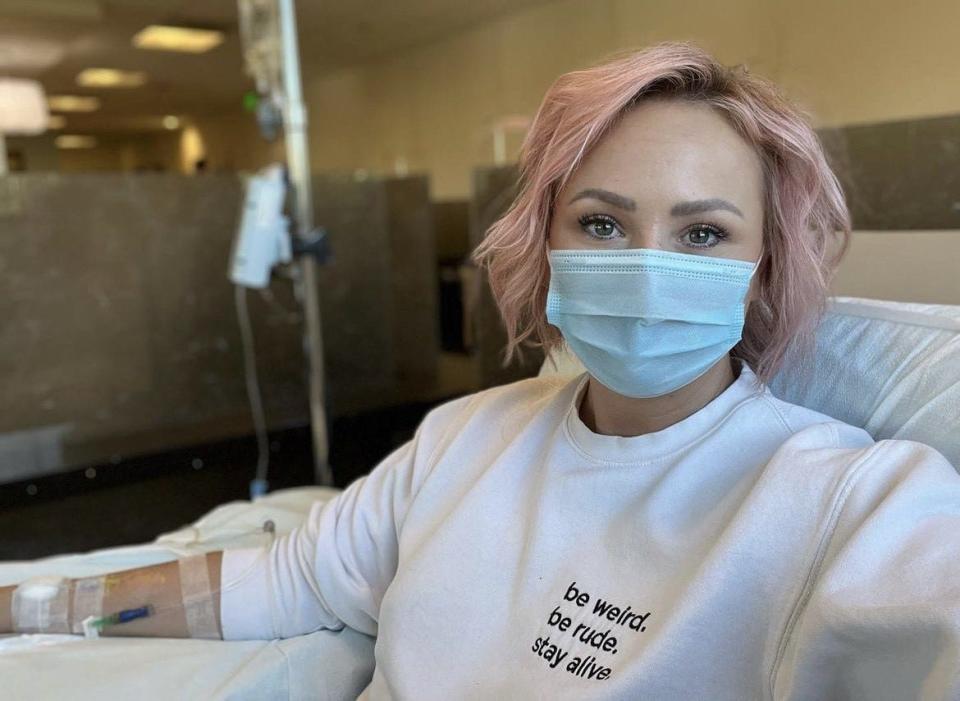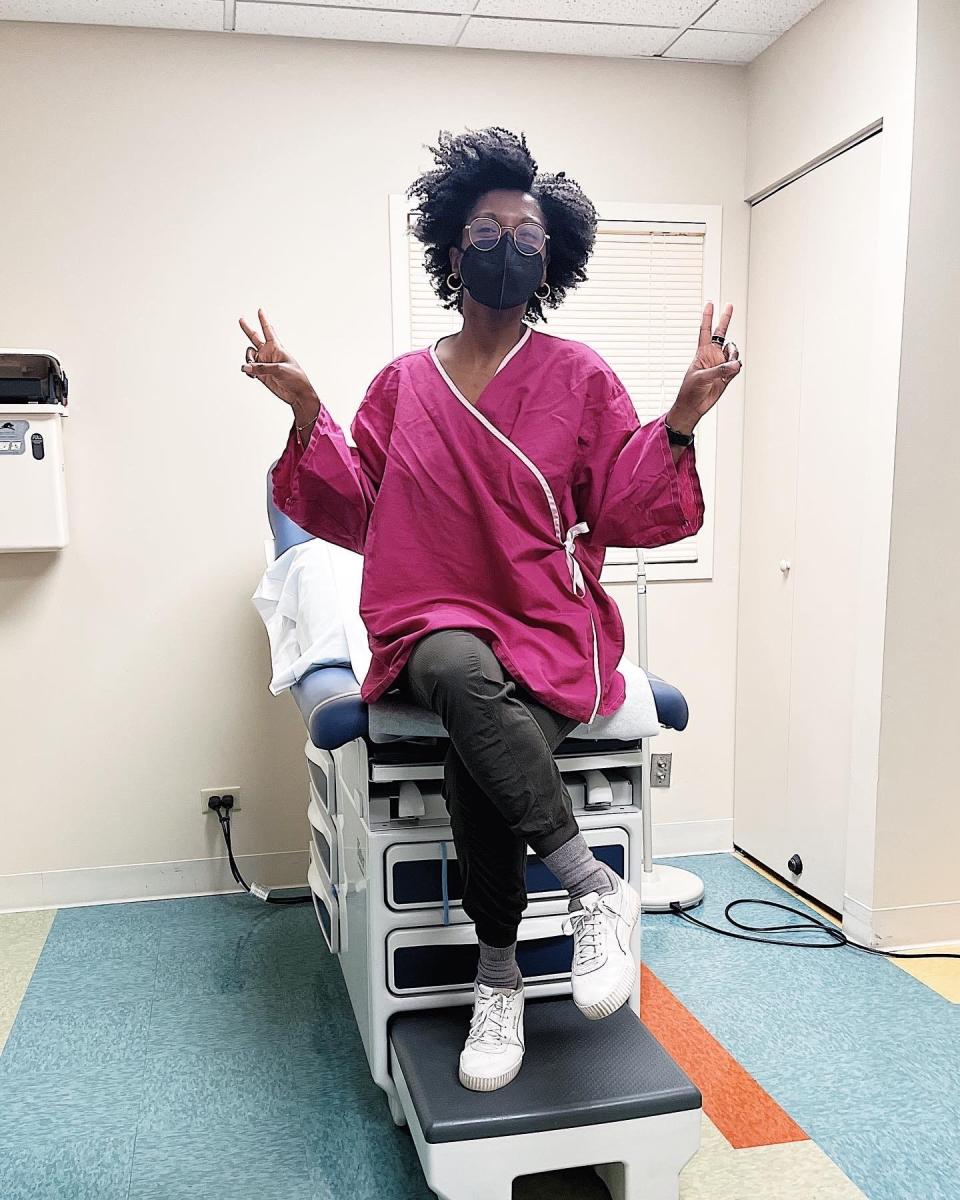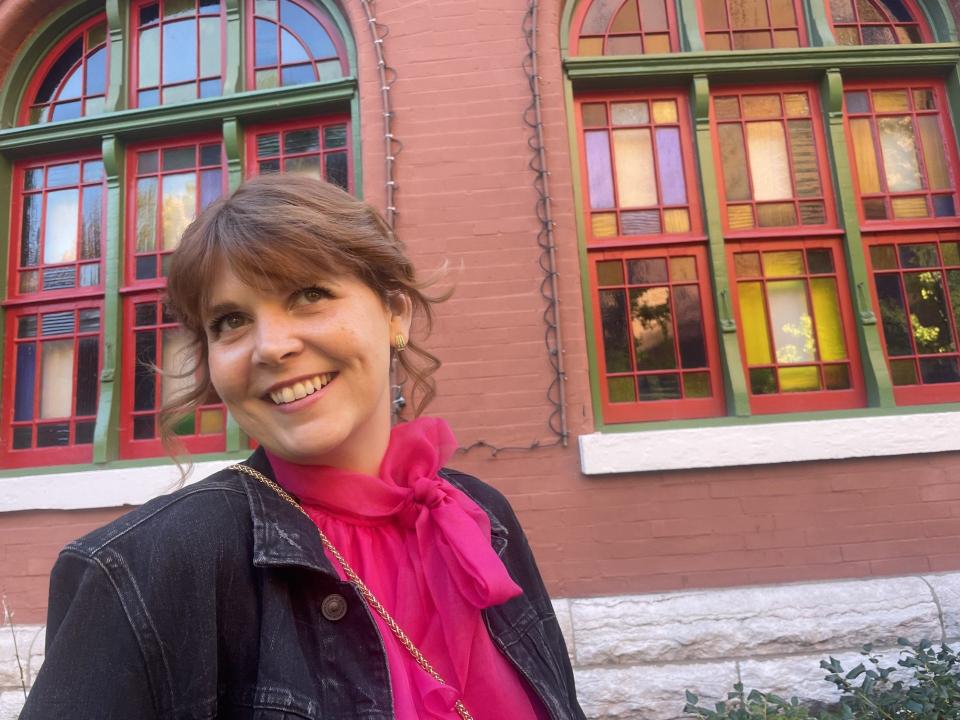When Kim Kardashian's nipple bra dropped, some people laughed. Breast cancer patients rejoiced.
- Oops!Something went wrong.Please try again later.
- Oops!Something went wrong.Please try again later.
Meshing business with climate change awareness, Kim Kardashian announced the release of her new Skims push-up bra featuring built-in nipples that “unlike the icebergs… aren’t going anywhere.”
Although Kardashian is honing in on the “shock factor” and sex appeal that nipples still have, she has, perhaps unintentionally, created a product that could be a game changer for one growing community in particular: people who have or had breast cancer who lost their nipples in an attempt to save their life. Since its launch on Oct. 31, the nipple push-up bra has sold out and been restocked on the Skims website multiple times, with only waitlist order options available as of Nov. 27.
“The PTSD from having your body mutilated from cancer is traumatic and not a choice for many people. When you remove your nipples, you’re not just taking away the aesthetics. You’re taking your intimacy; your ability to feed your child; your ability to feel sensations,” said Philecia La’Bounty, 36, who’s battling stage 4 breast cancer for the second time. “Regardless of why Kim made this garment or what inspired it, there's a massive community that is grieving the loss of their breasts and is extremely excited to have this easy, affordable and painless option to get their nipples back.”
Skims isn't the first to experiment with faux nipples. Victoria's Secret released a nipple bra in the early 2000s. But while the new product builds on the trendy push to “free the nipple” and ditch bras altogether, it was met with ridicule online. Some people thought Kardashian’s promo video posted Monday was an "SNL" skit, while many others questioned the need for such a product.

The breast cancer community, however, dominated the comment section with praise, and in conversations with USA TODAY, emphasized that this bra could also serve as a gender-affirming product for trans and nonbinary people.
A chance to feel like your pre-cancer self
In 2018, La’Bounty was given a 5% chance of living after she was diagnosed with stage 4 metastatic breast cancer at age 29 that had spread to her lungs, sternum and a lymph node in her armpit. She went into remission for 4½ years until March when the cancer returned. La’Bounty had a double mastectomy in May that left her breast- and nipple-less.
Mastectomies remove all breast tissue from one or both breasts to treat or prevent breast cancer in those who have a high risk of developing it. Lumpectomies, which save the breast by only removing the tumor, are another option for some people. But nipples can be lost or affected during either procedure.
Some patients may be able to have their breasts reconstructed at the same time as their mastectomy, but in many cases, people have to wait several months until they heal properly and finish the rest of their cancer treatment.
Options are slim for those hoping to have nipples again. They can opt for nipple reconstruction several months after they’ve healed from their previous surgery, which is expensive and doesn’t guarantee natural-looking results. Or they can get a tattoo to create the illusion of a nipple without the texture of a real one.
Nipple prosthetics – silicone adhesives that stick onto the chest – are another option for people who lost their nipples, but many people who have used them say that some products move around too much or aren’t realistic enough.
La’Bounty chose not to get her nipples reconstructed because she feared potential complications like tissue injury, a difficult decision she said she’s still coping with. Prosthetics also aren’t a good fit for her at this time in her breast cancer journey.

“I feel like I would be forcing myself to be someone that I’m not anymore,” La’Bounty said. “Wearing prosthetics would send me backward in my grieving process.”
A bra with built-in nipples, however, is exactly what La’Bounty said could give her the confidence she felt in her pre-cancer body. If scans later this year show she’s cancer-free again, La’Bounty said she will schedule her breast reconstruction and add the Skims bra to her shopping wish list.
“I'm really excited to try this bra on and look the way that I did before cancer forced me to take my breasts away,” she said. “I’m excited to see how that will make me feel and maybe I’ll put on a little outfit for my partner. I just want that ‘wow’ moment back.”
Having the freedom to choose
Before Victoria Price’s double mastectomy last April, doctors told her she would be able to keep her nipples – a silver lining for a 29-year-old single woman.
But the plan quickly changed after doctors realized how close the cancer in her milk ducts – a disease called ductal carcinoma in situ – was to her nipples. Because Price has the BRCA2 gene that increases her risk for breast and ovarian cancer, she opted to remove both breasts to err on the side of caution.
It’s a decision that a growing number of people are being forced to make as the number of new breast cancer cases increases, according to the American Cancer Society. Except for skin cancers, breast cancer is the most common cancer in women in the U.S., making up about 1 in 3 of all new female cancers annually.
Like La’Bounty, Price wasn’t ready for permanent nipples following her breast reconstruction. She scheduled a nipple tattoo appointment but canceled it.
“I don't think I'm ready to have any permanent nipple at the moment because there’s a lot of body dysmorphia when you go through this,” said Price, a professional actor in New York City. “But I do like the fact that with the Skims bra, I can choose when I want them.”

Having the freedom to choose when she has nipples also means giving parts of Price’s life back that cancer stole, like her intimacy.
“I was getting in touch with my body and sexuality in the years before my diagnosis. And as I got older, I really enjoyed not wearing a bra as much and having my nipples show,” Price said. “Losing all feeling in my chest and not having nipples has affected my intimacy, which obviously, the bra can’t bring back, but it could at least give me the confidence when I decide that’s what I’m going for.”
Working as an actor post-mastectomy has also introduced new challenges for Price, who said she often has to do quick changes backstage with little privacy. The nipple bra could help ease insecurity around not having nipples in those scenarios, she said, or even take a sexy character she may portray to the next level.
A missed opportunity?
Kardashian has received much praise for designing accessible underwear, loungewear and shapewear for people with different needs, which is why some in the breast cancer community thought it was strange that she didn’t see the potential in including them in marketing material – particularly when launching the product on the last day of Breast Cancer Awareness Month.
“Skims does a good job of including diverse influencers, but I didn’t see a single person who had anything but their original breasts in the promos, which is a huge missed opportunity, especially for a company that has put an emphasis on inclusion,” said Annie Bond, 34, who has been living with metastatic breast cancer for eight years. “For them to make a product that is revolutionary for us and then not include us in the conversation is just a bummer.”
Promotion for products like bras for people with breast cancer can be dicey because it could sexualize the disease, Bond said, but there’s a right way to do it: “It shouldn’t feel like a Playboy spread,” she said. "We just want to see ourselves represented with ourselves.”
The company AnaOno is one example to look to. It sells undergarments for people on their breast cancer journeys or those who have other needs for unique bra designs.

Bond was diagnosed with stage 4 metastatic breast cancer that spread to her lymph nodes and liver at age 26. Although her nipples were spared after a lumpectomy, Bond said they’re uneven, so the Skims nipple bra, which she feels is “one-of-a-kind,” could give her some confidence-boosting symmetry.
“When I wake up in the morning and I see that my nipples are uneven in the mirror, it's just a reminder of the trauma from my surgeries,” Bond said. “Being able to slap that bra on … is a really powerful thing – and that shouldn't be underestimated.”
Why are Kim and Kourtney fighting? 'Kardashians' Season 4 returns with nasty sister spat
This article originally appeared on USA TODAY: Kim Kardashian's nipple bra empowers breast cancer patients

